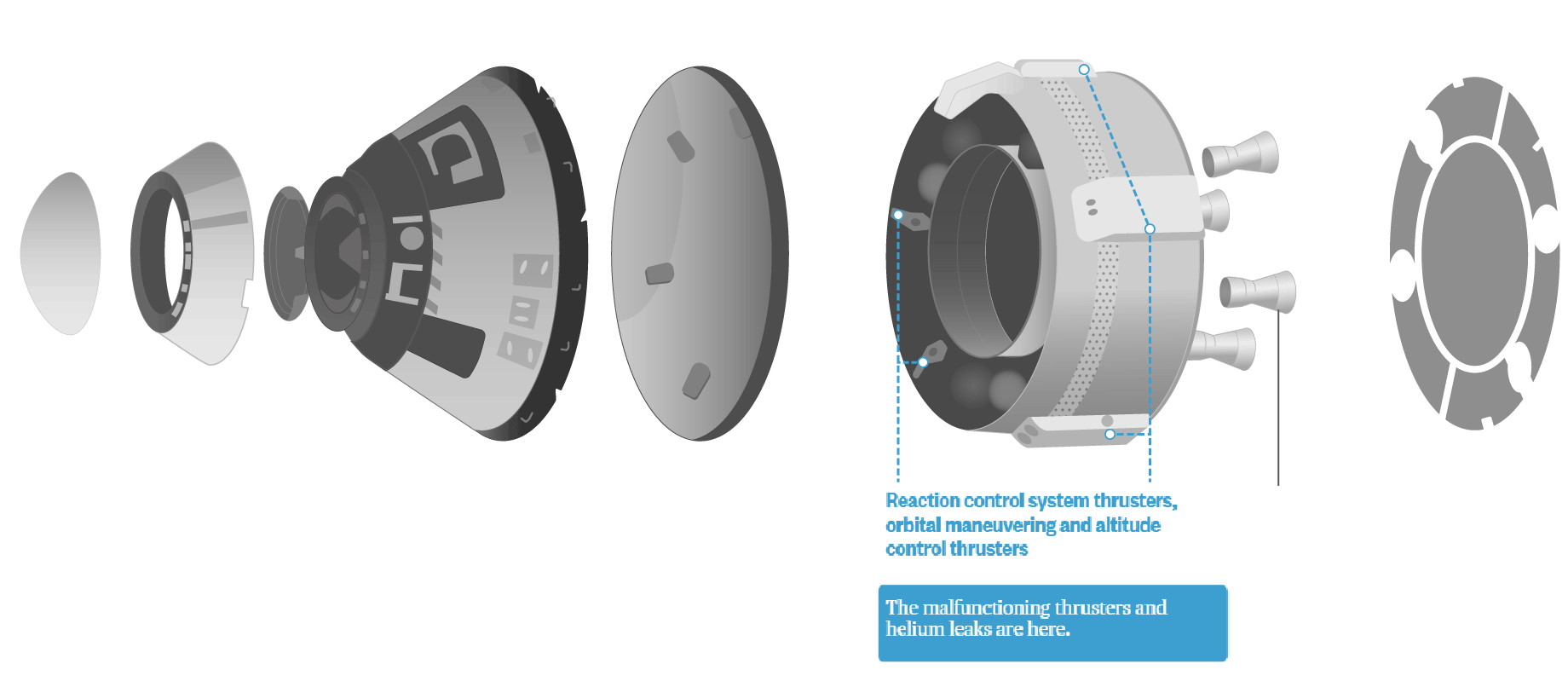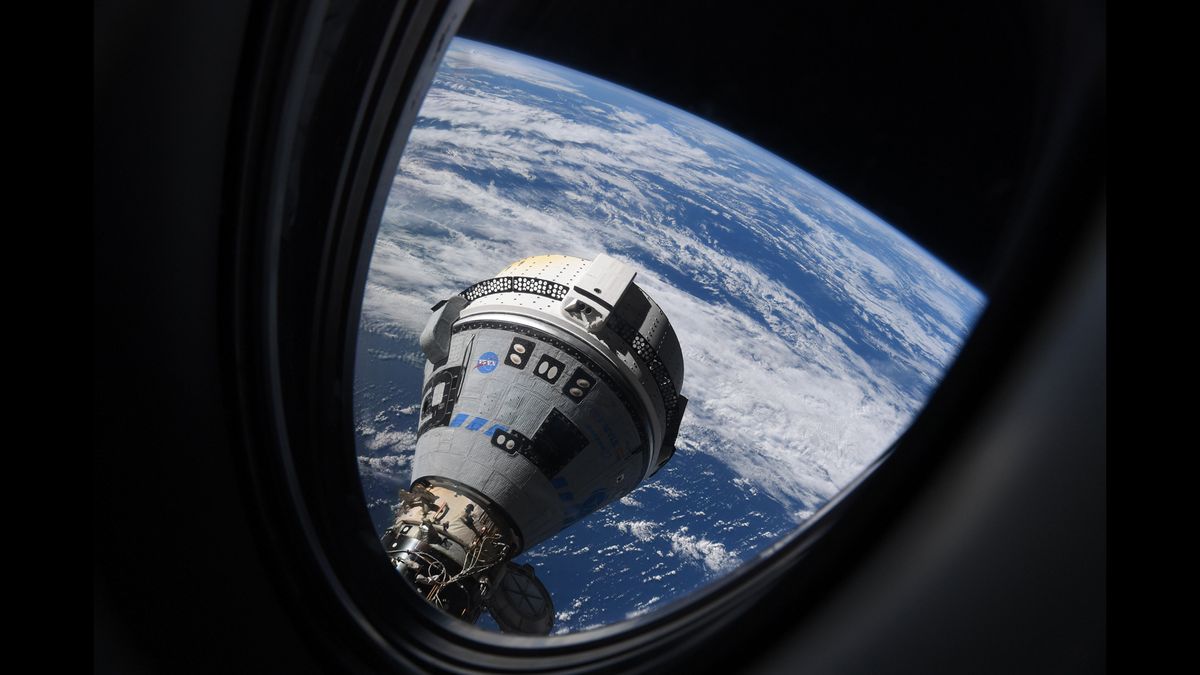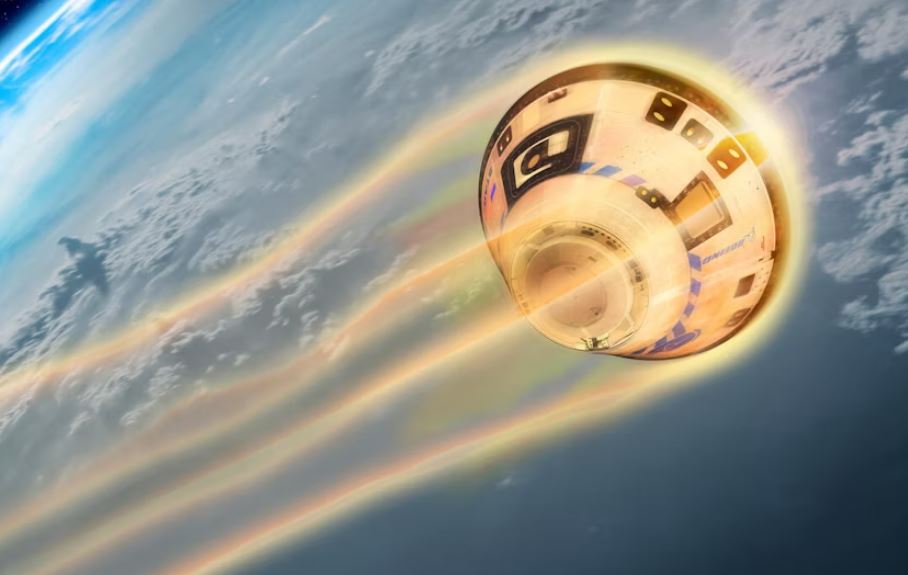
https://www.space.com/nasa-boeing-starliner-astronauts-will-return-on-spacex-dragon-2025
What is the problem with Starliner?
Two problems showed up as the spacecraft approached the International Space Station (ISS) back in June.
- Five of the 28 thrusters used to maneuver in orbit malfunctioned. Four were eventually brought back to functionality, and the astronauts were able to dock successfully.
- There have also been slow helium leaks in the propulsion system. In the weightless environment of space, pressurized helium is used to force fuel and oxidizer into the combustion chamber of a thruster.

https://dataviz.nbcnews.com/projects/20240816-starliner-thrusters-diagram/assets/ai2html-output-920-wide.png
The spacecraft got to the ISS, right? So what’s the problem?

https://cdn.mos.cms.futurecdn.net/MSGLQi2vuwfCMJmUaWLXj4-1200-80.jpg
If these thrusters were to malfunction during a reentry attempt, the astronauts might be unable to undock, back away from the ISS, and properly orient the spacecraft so that its protective heat shield faced forward.
Why is this a bigger deal for safe reentry than for launch?
When a spacecraft is launched, its path is determined by its launch vehicle, in other words, a rocket. The rocket takes it into orbit. Upon reentry, the spacecraft is on its own, dependent on its thrusters to keep it in the correct orientation to prevent its destruction by frictional heating as it plows into an ever-thickening atmosphere.

https://imgix.bustle.com/uploads/image/2024/6/14/17528397/317188-35b_cst_reentry_close.jpg
Why did NASA overrule Boeing engineers who declared the Starliner safe for reentry?
The interests of the two organizations are obviously in conflict. Boeing’s quality control problems are well-known, and the company is desperate to demonstrate competency in the aerospace industry it dominated for so long. NASA wanted two companies providing human-rated spacecraft for ferrying astronauts to and from the ISS. It provided Boeing with more than $4 billion, and SpaceX with $2.6 billion. Whatever you may think of Elon Musk, the founder of SpaceX, that company has demonstrated its clear superiority with fewer taxpayer dollars.
There are a lot of NASA managers who remember all too well the Columbia space shuttle disaster of 2003, when seven astronauts died as the spacecraft disintegrated during reentry. The culture of NASA has shifted since then toward prioritizing the safety of crew members.
Flying into space in inherently risky. If I were a NASA astronaut, I would be grateful for today’s decision.


